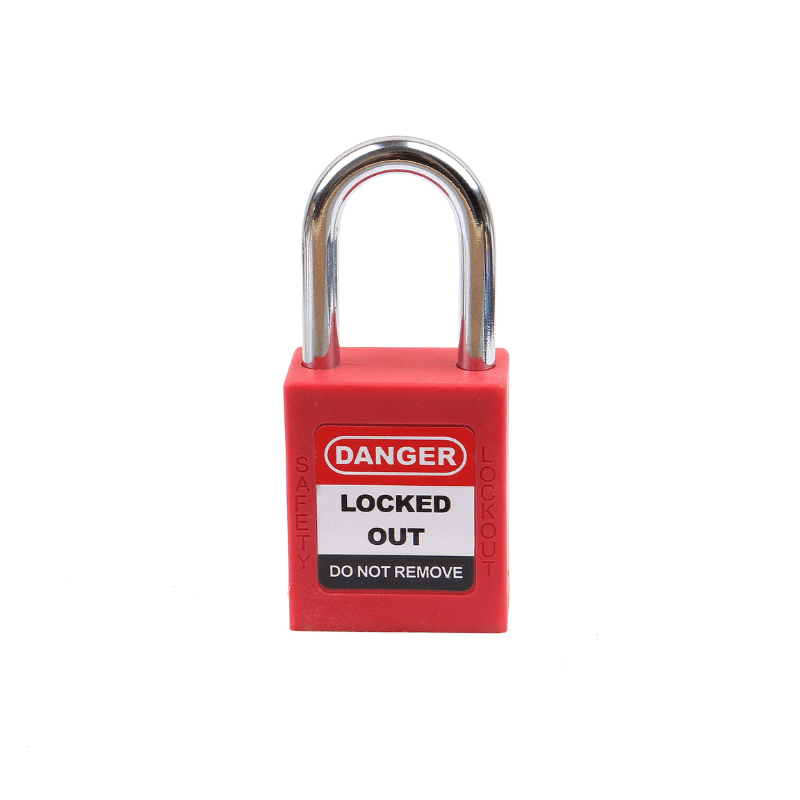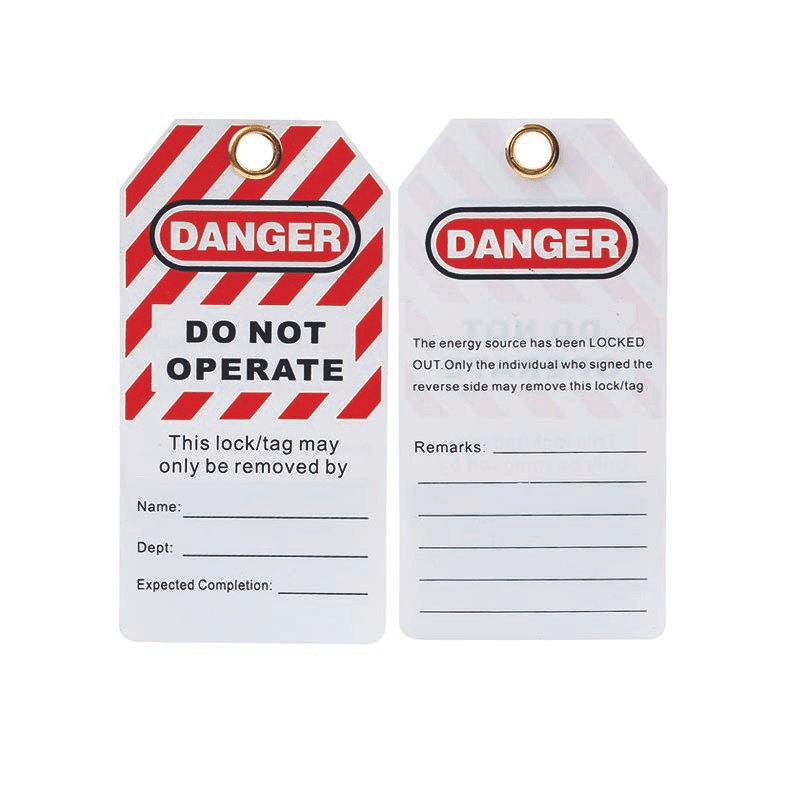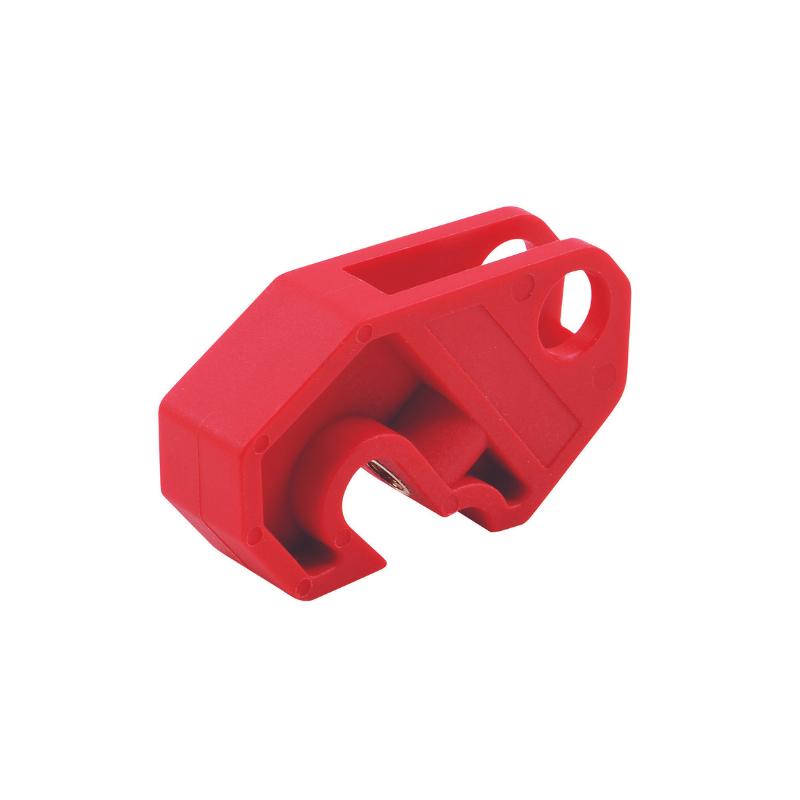Lockout/Tagout (LOTO) procedures are critical for ensuring workplace safety during equipment maintenance. However, an unorganized LOTO process can lead to inefficiency, delays, and increased safety risks. The **5S methodology**, originating from Japanese manufacturing principles, offers a structured approach to organization and efficiency—enhancing both safety and effectiveness in your LOTO program.
Table of Contents
- What is 5S?
- Step 1: Seiri (Sort) - Eliminating the Unnecessary
- Step 2: Seiton (Set in Order) - Organizing for Efficiency
- Step 3: Seiso (Shine) - Maintaining Cleanliness and Inspection
- Step 4: Seiketsu (Standardize) - Creating Consistent Procedures
- Step 5: Shitsuke (Sustain) - Making 5S a Habit
- Benefits of Using 5S for LOTO
What is 5S?
5S stands for five Japanese words that describe the steps of workplace organization:
- Seiri (Sort): Separate the necessary from the unnecessary.
- Seiton (Set in Order): Arrange necessary items for easy access and use.
- Seiso (Shine): Clean and inspect the workspace and equipment.
- Seiketsu (Standardize): Create consistent procedures and guidelines.
- Shitsuke (Sustain): Maintain the improvements and make 5S a habit.
These five steps, when applied systematically, create a workspace that is:
- Efficient: Reduced wasted time searching for tools and information.
- Safe: Reduced hazards associated with clutter and disorganization.
- Organized: Everything has a place, and everything is in its place.
- Clean: A clean workspace promotes a sense of order and professionalism.
- Consistent: Standardized procedures ensure everyone follows the same process.
Step 1: Seiri (Sort) - Eliminating the Unnecessary
The first step is to take a critical look at everything related to your LOTO program. This includes:
- LOTO Devices: Locks, tags, hasps, valve lockouts, circuit breaker lockouts, plug lockouts, etc.
- Documentation: LOTO procedures, equipment-specific procedures, training records, permits, inspection logs.
- Storage Areas: LOTO stations, cabinets, drawers, shelves.
- Other Supplies: Pens, markers, zip ties, cleaning supplies.
The goal of "Sort" is to identify and remove anything that is:
- Broken or Damaged: Dispose of any locks, tags, or other devices that are no longer in good working condition. Damaged equipment is a safety hazard.
- Obsolete: Remove any outdated procedures, documentation, or equipment that is no longer used.
- Redundant: If you have multiple copies of the same document or excessive quantities of certain supplies, eliminate the excess.
- Unrelated: Remove any items that don't belong in the LOTO area (e.g., personal items, unrelated tools).
Actionable Steps for "Sort":
- Gather Everything: Bring all LOTO-related items to a central location.
-
Red Tagging: Use red tags (physical or virtual) to identify items that are potentially unnecessary. Ask yourself:
- "Have I used this in the last six months?"
- "Is this item in good working order?"
- "Is this item essential for LOTO procedures?"
- "Is this the correct item for this location?"
- Holding Area: Place red-tagged items in a designated "holding area" for a set period (e.g., 30 days). This allows time for others to review and confirm whether the items are truly unnecessary.
-
Dispose, Relocate, or Return: After the holding period, make a final decision on each red-tagged item:
- Dispose: Properly dispose of broken or obsolete items.
- Relocate: Move items that belong in a different location.
- Return: Return items that were mistakenly red-tagged.
Step 2: Seiton (Set in Order) - Organizing for Efficiency
Now that you've eliminated the unnecessary items, it's time to organize what remains. The goal of "Set in Order" is to create a system where everything has a designated place, and everything is in its place. This makes it easy to find what you need, when you need it.
Key Principles of "Set in Order":
- Ergonomics: Arrange items based on frequency of use. The most frequently used items should be the easiest to access.
- Visual Management: Use clear labels, color-coding, and shadow boards to make it obvious where everything belongs.
- Logical Grouping: Group similar items together (e.g., all electrical lockouts in one area, all valve lockouts in another).
- Accessibility: Ensure that all items are easy to reach and retrieve, without having to move other items out of the way.
- "A place for everything, and everything in its place."
Actionable Steps for "Set in Order":
- Determine Optimal Locations: Based on the frequency of use and the type of equipment, decide where each item should be stored.
- Labeling: Clearly label all storage locations (shelves, drawers, bins, hooks). Use consistent labeling conventions.
- Shadow Boards: Create shadow boards for locks, tags, and other devices. A shadow board is a board with outlines or silhouettes of the tools, making it immediately apparent if something is missing.
- Color-Coding: Use color-coding to differentiate between different types of LOTO devices (e.g., red for electrical, blue for pneumatic, yellow for hydraulic).
- Document Organization: Organize LOTO procedures, permits, and other documentation in binders, folders, or digital files. Use a clear and consistent filing system.
- One point lessons Create easy to follow, visual instructions.
Step 3: Seiso (Shine) - Maintaining Cleanliness and Inspection
"Shine" is about more than just aesthetics. A clean and well-maintained LOTO area promotes a culture of safety and professionalism. It also makes it easier to spot potential problems, such as damaged equipment or missing items.
Key Aspects of "Shine":
- Regular Cleaning: Establish a schedule for cleaning the LOTO station, storage areas, and equipment.
- Inspection: Regularly inspect LOTO devices for damage, wear, and tear. Replace or repair any damaged items immediately.
- Preventative Maintenance: Implement a preventative maintenance schedule for LOTO equipment (e.g., lubricating locks, checking tag legibility).
- Immediate Cleanup: Address any spills, messes, or debris immediately.
Actionable Steps for "Shine":
- Develop a Cleaning Schedule: Assign responsibility for cleaning the LOTO area and establish a regular cleaning schedule (e.g., daily, weekly, monthly).
- Create Inspection Checklists: Develop checklists for inspecting LOTO devices and the LOTO station.
- Provide Cleaning Supplies: Ensure that appropriate cleaning supplies are readily available.
- Train Employees: Train employees on the importance of cleanliness and inspection, and how to properly clean and maintain LOTO equipment.
Step 4: Seiketsu (Standardize) - Creating Consistent Procedures
Standardization is crucial for ensuring that everyone follows the same LOTO procedures and that the improvements made in the previous steps are maintained.
Key Elements of "Standardize":
- Written Procedures: Develop clear, concise, and easy-to-understand written procedures for all aspects of the LOTO program, including the 5S implementation.
- Visual Controls: Use visual aids (e.g., diagrams, flowcharts, photos) to illustrate procedures and make them easier to understand.
- Training: Provide comprehensive training to all employees on the standardized LOTO procedures and the 5S principles.
- Audits: Conduct regular audits to ensure that the standardized procedures are being followed and that the LOTO area is maintained in accordance with the 5S principles.
Actionable Steps for "Standardize":
-
Document Everything: Create or update written procedures for all aspects of the LOTO program, including:
- The 6-step LOTO process (or your organization's specific version).
- Equipment-specific LOTO procedures.
- 5S implementation and maintenance.
- Develop Training Materials: Create training materials (e.g., presentations, videos, handouts) that clearly explain the standardized procedures.
- Conduct Regular Audits: Establish a schedule for conducting regular audits of the LOTO program and the 5S implementation. Use a checklist to ensure consistency.
- Feedback Mechanism: Create a system for employees to provide feedback on the LOTO procedures and the 5S implementation.
Step 5: Shitsuke (Sustain) - Making 5S a Habit
The final step, "Sustain," is often the most challenging. It's about making the 5S principles a part of the organizational culture and ensuring that the improvements are maintained over time.
Key Strategies for "Sustain":
- Management Commitment: Strong leadership support is essential for sustaining the 5S effort. Management should actively promote 5S and provide the necessary resources.
- Employee Involvement: Encourage employee participation in the 5S process. Empower employees to identify problems and suggest improvements.
- Continuous Improvement: 5S is not a one-time project; it's an ongoing process of continuous improvement. Regularly review and refine the 5S implementation.
- Recognition and Rewards: Recognize and reward employees for their contributions to the 5S effort.
- Visual Reminders: Use posters, signs, and other visual reminders to reinforce the 5S principles.
Actionable Steps for "Sustain":
- Form a 5S Committee: Create a team responsible for overseeing the 5S implementation and promoting continuous improvement.
- Regular Meetings: Hold regular meetings to discuss 5S progress, address challenges, and share best practices.
- Performance Metrics: Track key performance indicators (KPIs) related to LOTO and 5S (e.g., number of LOTO violations, time spent searching for equipment, audit scores).
- Celebrate Successes: Recognize and celebrate achievements in implementing and maintaining 5S.
Benefits of Using 5S for LOTO
Implementing 5S in your LOTO program offers numerous benefits:
- Enhanced Safety: Reduced risk of accidents due to improved organization, clear procedures, and readily available equipment.
- Increased Efficiency: Reduced time wasted searching for tools, equipment, and documentation.
- Improved Morale: A clean, organized, and efficient workspace promotes a sense of pride and professionalism.
- Reduced Costs: Fewer accidents, less wasted time, and less equipment damage lead to cost savings.
- Better Compliance: Easier to comply with regulatory requirements (e.g., OSHA's LOTO standard).
- Stronger Safety Culture: 5S promotes a culture of safety and continuous improvement.
Conclusion
The 5S methodology provides a powerful framework for improving and streamlining your LOTO program. By systematically sorting, setting in order, shining, standardizing, and sustaining, you can create a LOTO system that is not only safer but also more efficient and effective. Remember, 5S is not just about cleaning up; it's about creating a culture of continuous improvement and making safety a top priority. The investment in 5S will pay dividends in the form of a safer, more productive, and more organized workplace.
Need Expert Advice on Lockout Tagout?
Lockout Tagout (LOTO) is crucial for workplace safety, but it can be complex to implement correctly. Whether you need guidance on the best practices, training requirements, or selecting the right lockout devices, The Lock Box is here to help.
Our team of LOTO experts is ready to answer your questions and provide tailored solutions for your facility.
Contact us today at hello@thelockbox.ch – let’s ensure your workplace is safe and compliant!



